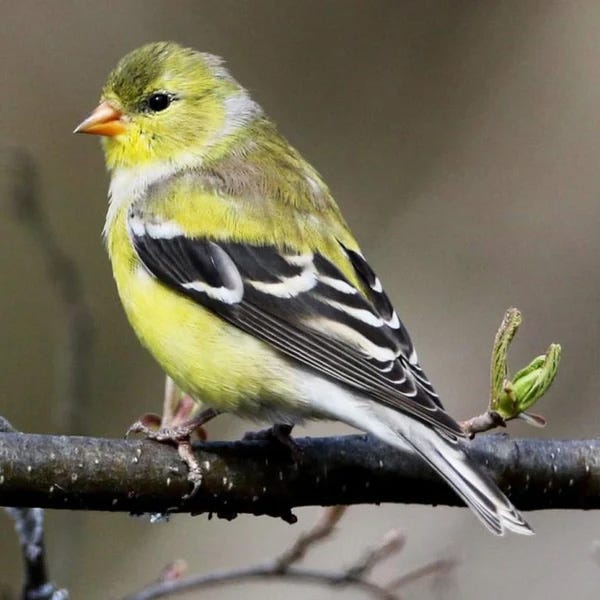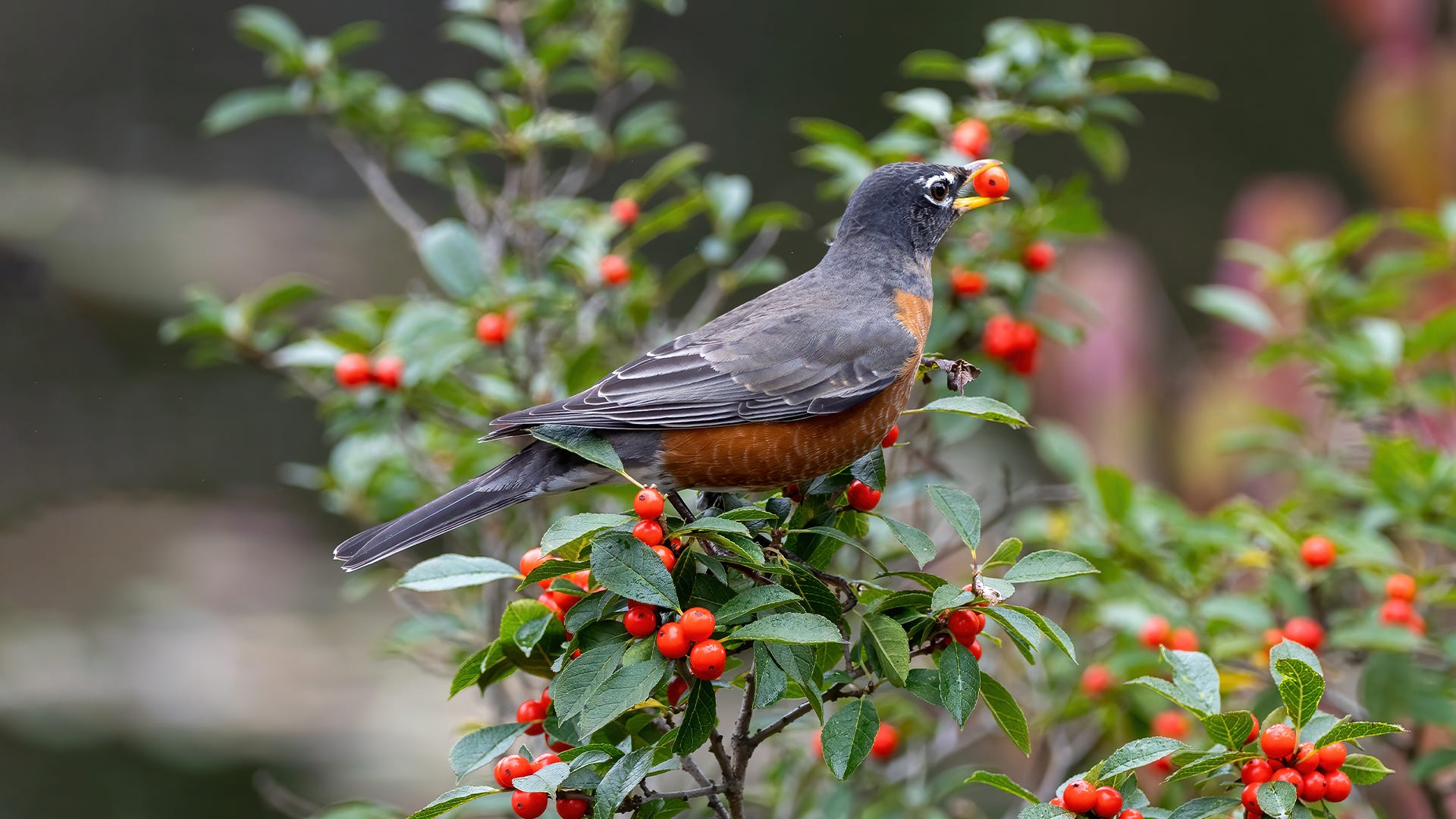
While most species of birds are seeing off their nestlings, the American Goldfinch—also referred to as the Eastern Goldfinch—is just getting started with the breeding process. The goldfinch is one of the last songbirds to breed each summer. These late bloomers often waiting until late August to lay their eggs. It’s not unheard of for these finches to even wait until early fall.
Head to Meadows and Open Fields to Spot American Goldfinches
Pass a big open meadow in summer and you’re sure to spot an American Goldfinch flying overhead. As it flies by, you’ll see flashes of gold in the bright summer sun. The male is striking with its lemon yellow body, ebony black cap, and touch of white on its bottom. The finch’s flight pattern is distinguishable by the way it springs up and down. If you spot a smaller similar bird, a muted brown, you have most likely spotted the female goldfinch. Meadows and overgrown weedy fields are a common spot for the finch to congregate as they feed off the abundance of seeds found there.

American Goldfinch Nesting Season
The American Goldfinch is just getting started nesting as most other species’ nests begin to empty in the heat of August. The goldfinch’s nesting season is a short one that begins to peak in late August. For backyard birdwatchers, it’s a great time to keep a look out for the goldfinch’s nest. Their late breeding ties in perfectly to the abundance of the milkweed thistle and other seed head plants that are sought after by the American Goldfinch for nest building.
See also: Tips for Safely Feeding Birds in SummerThe Goldfinch’s Unique Nest
You can find goldfinch nests in meadows, fields with tall grass, and shrubby areas. Still, the goldfinch is not opposed to nesting in back yards. Similar in appearance to the cup nest of the hummingbird, these nests are usually three inches in width and no more than three inches in height. The nesting material of down from milkweed is carefully constructed among twigs and spotted several meters from the ground.
Incredibly, these nests are woven so securely that they are watertight. This poses an immediate danger during a heavy rainstorm; the nestlings can drown in the nest if the mother bird does not cover the nest. It’s the only nest ornithologists have found capable of holding water.

The Laying of the American Goldfinch Eggs
The American Goldfinch will lay two to seven eggs. Experts have theorized that these eggs are laid during the night. Though some species of birds will have multiple broods annually, the goldfinch will raise only one brood per year, likely due to its late breeding. The goldfinch eggs are pale bluish-white ovals, sometimes with light brown spots. As we sometimes use the term ‘peanut’ to refer to someone small, it’s a perfect way to describe the size of these eggs, which are typically the size of a peanut. The incubation period will last for about two weeks, during which time the female will tend to the eggs while her mate can be seen bringing her food. After an incubation period of about two weeks, the eggs begin to hatch.
See also: Please Don’t Give Birds These Nesting MaterialsFrom Nestlings to Independence
The American Goldfinch chicks are hatched naked, like all passerines (birds that perch). At first, the mother bird will feed the young exclusively, regurgitating seeds as they grow. If you’re lucky enough to catch the female goldfinch in action, her acrobatic antics will amuse you as she hangs from the thistle plants and skillfully extracts the seeds with her feet. The American goldfinch is the only finch species that extensively uses its feet in feeding its chicks.
The nestlings develop quickly. Within three days, their eyes open and they’ve grown a greenish-brown juvenile plumage. Between eleven and fifteen days after hatching, these hatchlings are preparing for life outside the nest with practice flights. Even still, these practice runs take place close to the nest.
Eventually the female’s workload of constant feedings lessens, and the chicks are fed by the male, who instinctively locates them by their distinct fledgling call. Once independent, the hatchlings will no longer make this call. Within a little over two weeks’ time, the young birds leave the nest.

The Empty Nest
With her nest empty, the cycle of the life of the American Goldfinch continues. Not threatened by human activity, the goldfinch will visit backyard feeders as well as the other common areas they frequent. After the breeding season, you can continue to attract this bird to your feeders with perennial plants such as zinnias, cosmos and thistle plants, which produce their favored seed heads.
Unlike some species of birds, the clearing of forests benefits these short-distance migrants. They prefer open areas where weeds thrive, providing them with an abundance of their primary food source. After the fall migration, the American Goldfinch will return and continue to delight late summer birdwatchers as they nurture yet another brood.







